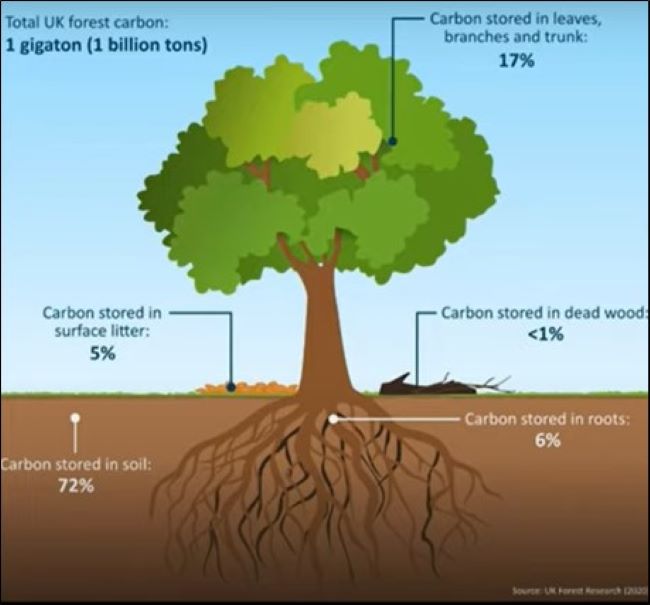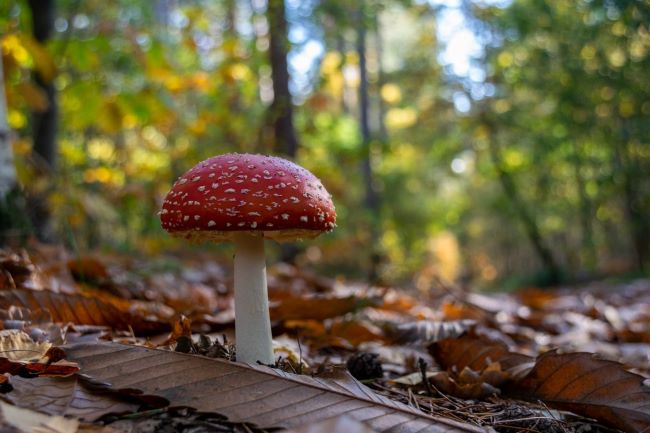Why we plant trees
Some amazing new discoveries

Why we plant trees, (by Environment Officer Francis Phillips)
Many Rotary clubs in the North East are determined to show that everyone can do something practical about climate change if they work together with others, especially with the young. Some have planted hundreds of small saplings for a greener and more pleasant land, while others planted larger, memorial ones.
Inspiring all of us is the Queen’s imaginative Platinum Jubilee Appeal for a ‘Green Canopy’ across her realm. Rotarians nationwide have registered many thousands of trees so far, with more to follow by the end of the year.
Our knowledge of the importance of trees and ancient forests to the environment has been advancing by leaps and bounds over the past decade. It is not just the forested areas or numbers of trees in total which matters, but the variety of species growing in proximity together, and the spread of their ages. Trees are categorised into two groups: those in woodlands and those standing singly outside woodlands - in towns, villages, and fields. Trees cover 13% of the land area in the UK, but only 10% in England, compared to an average of 35% across Europe. If the UK is to reach its carbon neutral target by 2050 it needs to raise its tree cover from 13% to 19% - and that was before this winter’s storms; Arwen, Dudley, Eunice and Franklin. These toppled another estimated four million trees in England alone.
However, in a new change of policy, where possible, most of the latest fallen trees will be left to degenerate where they fell, to provide natural habitats for wildlife. Trees are the ultimate carbon capture and storage machines. Like great carbon sinks, woods and forests absorb atmospheric carbon and lock it up for centuries. They do this through photosynthesis.

But, it is not just the trees; the entire woodland ecosystem plays its role in locking up carbon. Apart from the tree visible above ground, the roots systems grow downwards and draw down carbon nutrients to feed the surrounding soil. Leaf debris and dead wood also break down and feed into the soil. A handful of soil contains hundreds of worms and other species constantly enriching it further. Trees provide homes for birds, small mammals, and hundreds more different bug species, and the whole bio-diverse habitat of the forest can expand as new trees are added.
Trees also help fight climate change in other ways. They reduce flooding, reduce air pollution, and they reduce city temperatures.
An amazing scientific discovery has also emerged from the giant forests of North America. The trees of different ages and species in these forests do not compete with one other for sunlight and underground nutrients, as scientists and agro-forestry experts had always assumed. Instead, they actively co-operate. We now know they communicate with one another intelligently. The forest floor is alive with tendril networks of different fungal species which warn trees of harmful diseases attacking others nearby, allowing any under threat to boost their relevant immune systems in advance.

Other specialised fungal species transfer essential nutrients like water to younger saplings in times of drought, helping them to grow unexpectedly strongly in the shaded ‘understory’ areas alongside older, taller trees. Older ones can reach deeper down and then pass water ‘upwards’ to younger ones when they need it more.
At the end of their long lives the very oldest ‘mother’ trees even seem able to help young ones of other species, as well as of their own, by giving away their own internal wood structure when they themselves begin to wither and die. Ancient forests display a beneficent wisdom, yielding optimum benefit to all. They possess an awesome collective intelligence.
Reference: Finding the Mother Tree by Suzanne Simard – Published by Penguin UK
 Contact Francis Phillips about this page:
Contact Francis Phillips about this page:.jpg)